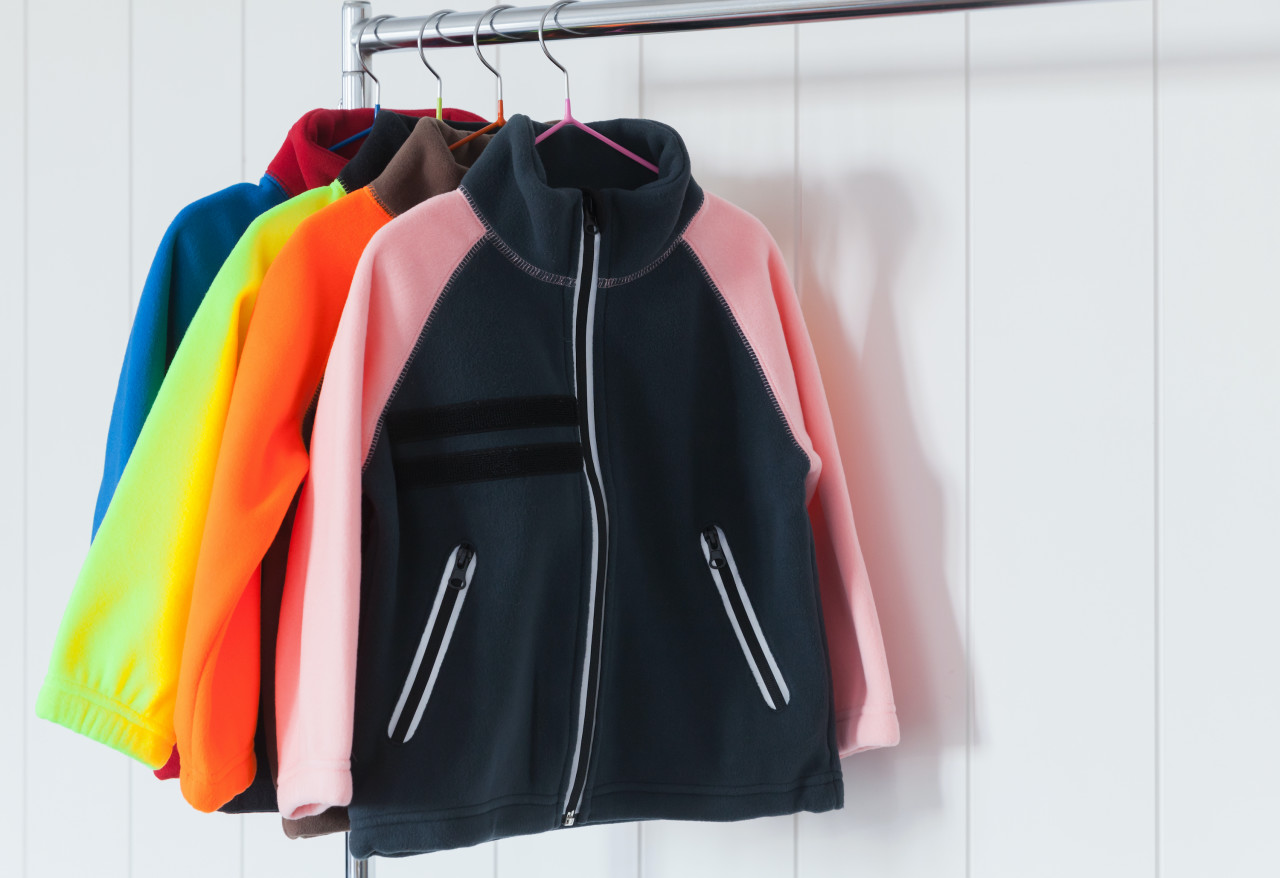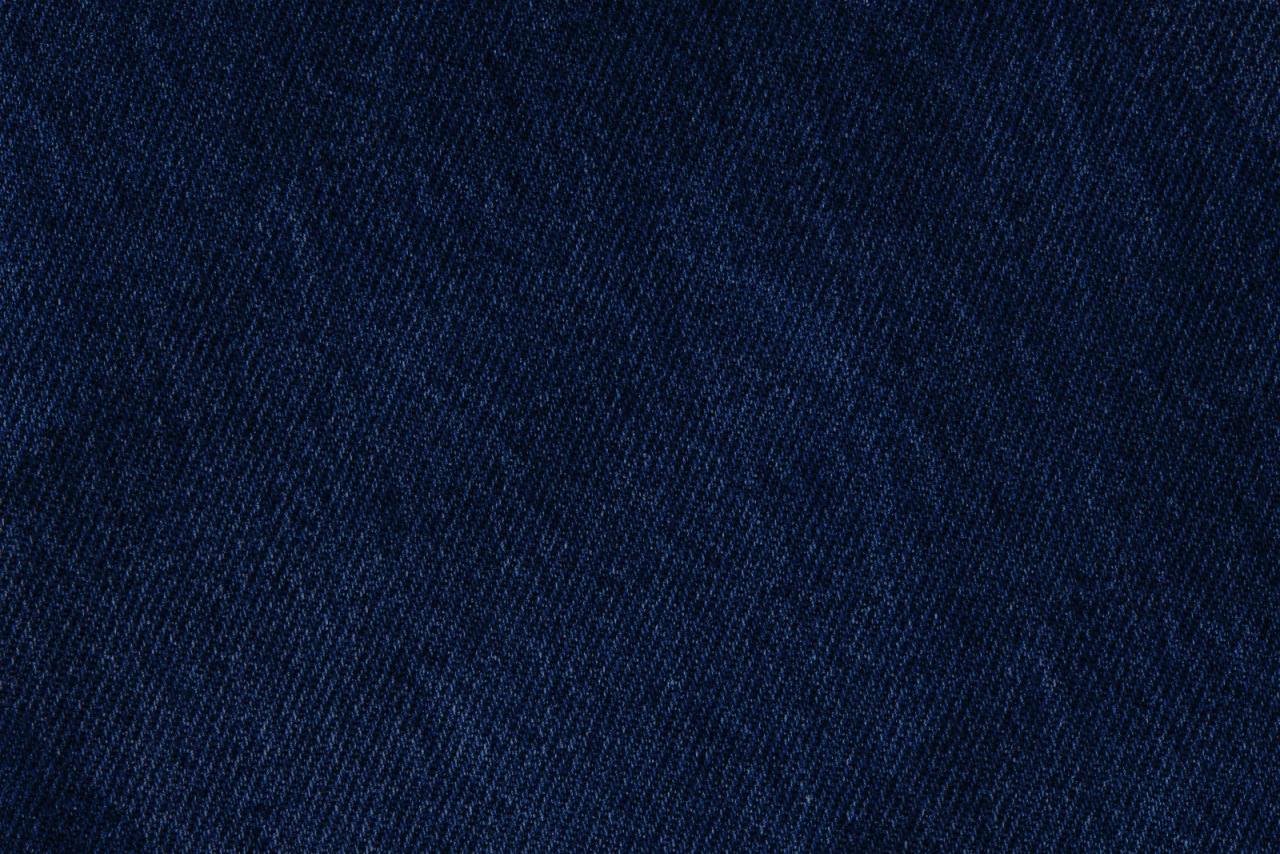If you want something cosy and casual, there’s a good chance you’ll throw on a fleece. What is fleece made of, though? If that’s a question that’s ever crossed your mind, we have the answer.
What is fleece material?
The name probably brings sheep to mind. Usually, though, the cosy fabric we call ‘fleece’ is actually made from polyester.
Plastic might not be your first thought when you’re cuddling up in a warm fleece, but that’s exactly what polyester is. It’s the same material that’s used to make plastic bottles, and it’s used in a lot of clothes. If you want to know more about polyester, we have a quick ‘what is polyester?’ guide.
Although ‘fleece’ usually refers to polyester fleece, we’ve also got the information below if you came here in search of how to wash other types of fleece.
What are the properties of fleece?
Just to be clear, we’re talking about synthetic fleeces here.
Fleece is warm, as you already know. Can you see the rough, fuzzy inside of your fleece? That creates room for air pockets that hold your body heat inside the jacket with you. Try putting your fleece on inside out, so the smooth side is the one against your body, and you’ll probably find it’s not as cosy.
Fleece resists water; that’s the plastic coming into play. After washing, you might find that your fleeces dry faster than your clothes made of natural fibres.
Fleece also resists wrinkles, conveniently.
Fleece can build up static electricity easily.
Fleece is a reasonably breathable material.
Fleece can safely be machine washed, which we’re about to get into.
Sheep fleeces are also good at trapping heat, but they’re much more absorbent than synthetic fleeces, and they tend to resist static. They’re also protected by lanolin, which we’ll be talking about later.
Washing a fleece jacket
It’s easy to assume that polyester fleece needs special treatment when washing, like wool. Fortunately, polyester fleece is actually easy to take care of. Check the care label to be sure, but you can usually put it in with your regular wash.
Here are a few things to bear in mind when you’re cleaning fleece:
Polyester doesn’t usually shrink in the wash, but it can be blended with natural materials that are more prone to shrinking, so double-check exactly what your fleece is made of.
Wash fleeces inside out to reduce the risk of pilling on the outside. You might still get pills on the inside, but at least nobody will see them!
Check the fleece manufacturer’s advice on whether to use fabric conditioner. A small amount of fabric conditioner, such as Comfort Pure, can reduce the buildup of static electricity.
Hang your fleece up to air dry, rather than machine drying.
Ironing can be risky, as polyester can melt under a hot iron. Honestly, though, there’s not usually any need to iron a fleece, as it’s a casual item and it’s wrinkle-resistant.
Why use a fabric conditioner?
When washing your denim, a little bit of fabric conditioner can go a long way. Here’s why:
Long-lasting clothes. Smooth fibres mean less friction in the wash. Less friction = less wear and tear.
Helps to retain their shape. Don’t let your favourite t-shirt become a crop top!
Helps protect against colour fading. Keep your clothes the colour they were when you fell in love with them.
Softer clothes. Amazing softness even for sensitive skin! Comfort’s Pure range is dermatologically tested, so every drop is a tiny dose of love. You can check Comfort Pure here!
Added protection against bobbling. No more picking bits off your jumpers; fabric conditioner keeps your clothes looking brand new.
Fast-drying. No need to wait for ages for your favourite outfit to dry.
Easier to iron. Look sharp 24/7.
Freshly scented. Comfort’s fragrances keep your clothes smelling amazing.
Washing other fleece items
Although fleece is usually made of polyester, there are other types of fleece. If you’ve got a sheepskin rug, coat or pair of boots, you might be interested in knowing how to wash these:
Give the sheepskin a good brushing on a regular basis; if you use it often, brush it about once a month. There are specialised sheepskin brushes you can use for this. Brushing will often leave the fleece looking a lot cleaner, with no washing necessary.
If you decide it needs more attention, check the care label. There’s a good chance your fleece is dry clean only.
If the label allows you to wash by hand, it’s best to spot clean. Mix a little detergent into tepid water, apply it to a clean sponge or cloth and use it to dab away stains.
You want to avoid giving this kind of fleece a full wash because that can strip away the lanolin, which is a fat that helps to keep wool clean and waterproof. If you decide that washing is the only way to go, though, here are the steps:
Put lukewarm water in a tub that’s large enough to hold your sheep fleece; you might need to use the bath for this.
Add detergent (the amount will depend on the specific detergent – check the instructions) and mix it in.
Add the sheepskin itself. Gently work the fleece clean with your hands.
Rinse the detergent out with cold water.
Squeeze excess water out but be careful not to wring.
Let the fleece dry flat on a towel.
Now that you know about different types of fleece, you might be curious about different types of material. From different types of cotton fabric to the properties of silk, we can help.


